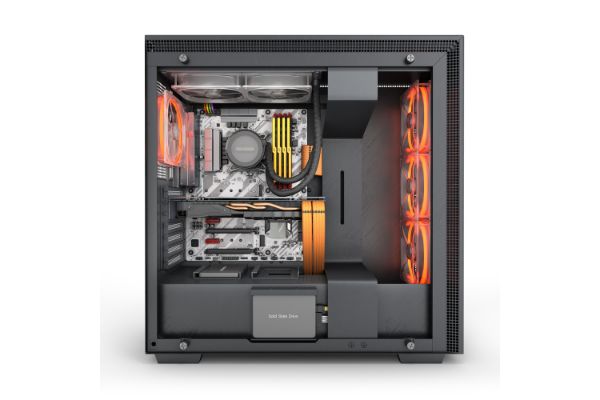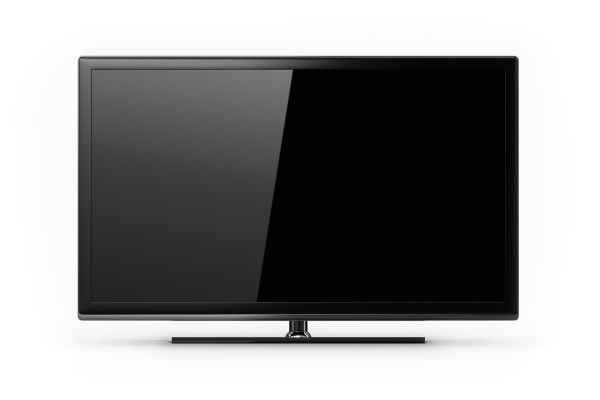Disclaimer: This post may contain affiliate links, meaning we get a small commission if you make a purchase through our links, at no cost to you. For more information, please visit our Disclaimer Page.
When most people think of a desktop PC, they probably picture a keyboard and mouse combo, a tower, and a monitor. The monitor is one of the big things that are just part of the usual computer set up. Indeed, it’s the primary way users view content on their machines.
However, some people who put computers together or are interested in how they work wonder if you absolutely need a monitor on a PC. We’ll answer that question in depth and dive into some specifics below.
Table of Contents
Can a PC Work Without Monitor?
Although the question is a little more complex once we get into it, we can clear it up quite simply right off the bat. Yes, a PC can work just fine without a monitor attached to it. However, it’s important to understand the limitations here, and it is equally important grasp why this is the case.
Many people might assume that a computer simply could not work without a monitor. While a PC’s functionality is certainly limited by a missing monitor, it’s not true that the computer isn’t working. At its most basic level, a computer only cares about input.
The computer wants to compute data, and it needs components that will accept the input of that data for it to run. A functioning monitor is an example of an output device, that is, one that will display the data in some form that makes sense to us as users. That can be a block of text on a webpage, imagery, or a video.
While it is probably obvious how necessary monitors are for users, computers don’t care about output until we tell them to care about it and display information for us. When you are working or performing tasks on your computer, you often put data in various ways.
Once you do, the computer makes calculations and returns the results of that data to you using the monitor. In the background, though, a PC could make many similar calculations without the need to display them on a monitor.
Do You Need a Monitor for a PC?
A monitor is a very helpful piece of most PC setups. That said, you do not absolutely need a monitor for a PC. You may have some other viewing device in mind. With advancements in viewing technology, there are a few different options open to you that we will cover in the sections below.
In other cases, you may simply want to build and test PCs to see if they are in good working order. You can actually do this without a monitor at all.
In fact, while the boot process may display data or error messages on the monitor that are helpful for you as the user, a computer isn’t even concerned with whether a monitor is attached to it.
Many people like to run what they refer to as “headless” personal computers for various reasons. We will cover some of those common reasons, and we will also introduce you to some of the possible alternatives to a PC monitor.
Why Do People Use a PC Without a Monitor?
You may have heard that some people run personal computers without monitors. Although this is not terribly common, there are a couple of good reasons to do this.
1. If you’ve recently acquired or constructed a new personal computer, you can test it to ensure it is working without using a monitor. You won’t be able to work with or install software on the computer without a screen. However, any computer that is functioning normally should boot up and start running.
Once turned on, any computer will perform a diagnostic called the Power-On Self-Test, otherwise known as POST.
The POST is a computer’s way of ensuring that everything is in good working order, and it is able to do this without the need for a monitor. If you want to test your computer without a monitor, everything should start properly once you power on the machine.
This would include lights, fans, and other things in the tower. Mechanical drives should also start spinning. If none of these things happens, you know something is wrong with the machine.
2. The other major reason people might use a PC without a monitor is simply because they might prefer other output devices. We will go into some detail about this in the next section, but you can indeed display data processed by your computer on something other than a monitor.
3. Some people like to run a particular computer as a server. A server provides support for other machines to be able to compute data or perform other tasks. You can think of it as something that looks like a computer, but it is more of a resource bin that allows other computers on a network to access to the help it offers.
If someone is running a computer as a server, it would not need a monitor to perform its job. As long as the other computers could “see” the server on the linked or remote network, it would work fine without a monitor attached.
What Can You Connect to a Computer Instead of a Monitor?
We’ve touched on the fact that a PC can work without a monitor, but it is certainly a helpful tool to have for most users. While you do not need a monitor for a PC, you’ll likely want some kind of interface to be able to use it to its full capabilities. However, this doesn’t have to be the traditional model you might think of when personal computers come to mind.
1.Television
With innovations in technology and new ways of plugging things in coming all the time, you can hook your traditional PC tower up to a different viewing device such as a TV. This is great if you want a much larger monitor to play games or do work on.
All you really need to do is hook up your PC to a port on your television monitor via HDMI.
Many modern television screens come with at least one HDMI port. You may also be able to cast your computer’s data to the TV screen, but this requires at least an initial monitor to perform some preliminary actions first.
2. Modern Projector
A modern projector may be able to accept input from a computer tower for display purposes as well. Use a projector to have a larger or smaller image than you otherwise might with a more traditional monitor, which could give you some flexibility in how the image is displayed.
It is important to remember that projectors have a slightly slower response time when receiving this visual data.
3. Virtual Reality Headsets
Virtual reality headsets are still in the development stage in terms of what they can display and how, but they are another option here. To be clear, you will still need access to a monitor even if the headset is your primary viewing device.
In most cases, VR headsets are not directly compatible with PC interfaces, and you would use special software to sync them up. In these cases, a monitor would still be a primary display device for the computer, and a headset could mirror the computer’s display as a way to make your experience more immersive.
Keep in mind that most headsets need powerful computers backing them to run properly. Even then, image quality within the VR interfaces tends to be lower than what you might experience on a traditional monitor.
Conclusion
Monitors are important parts of most personal computers we use for daily tasks. They’re the default output devices many users are familiar with.
While monitors might be ubiquitous, it’s important to remember that computers don’t necessarily need them in order to perform processes.
As you’ve seen, some specialized computers, such as servers, may not benefit from monitors at all. Several other visual output options exist that you might like to use with your computer setup.
Last, even if you have a monitor as an option with a PC or laptop, you may want to connect it to larger or nonstandard devices for a different kind of visual display.


